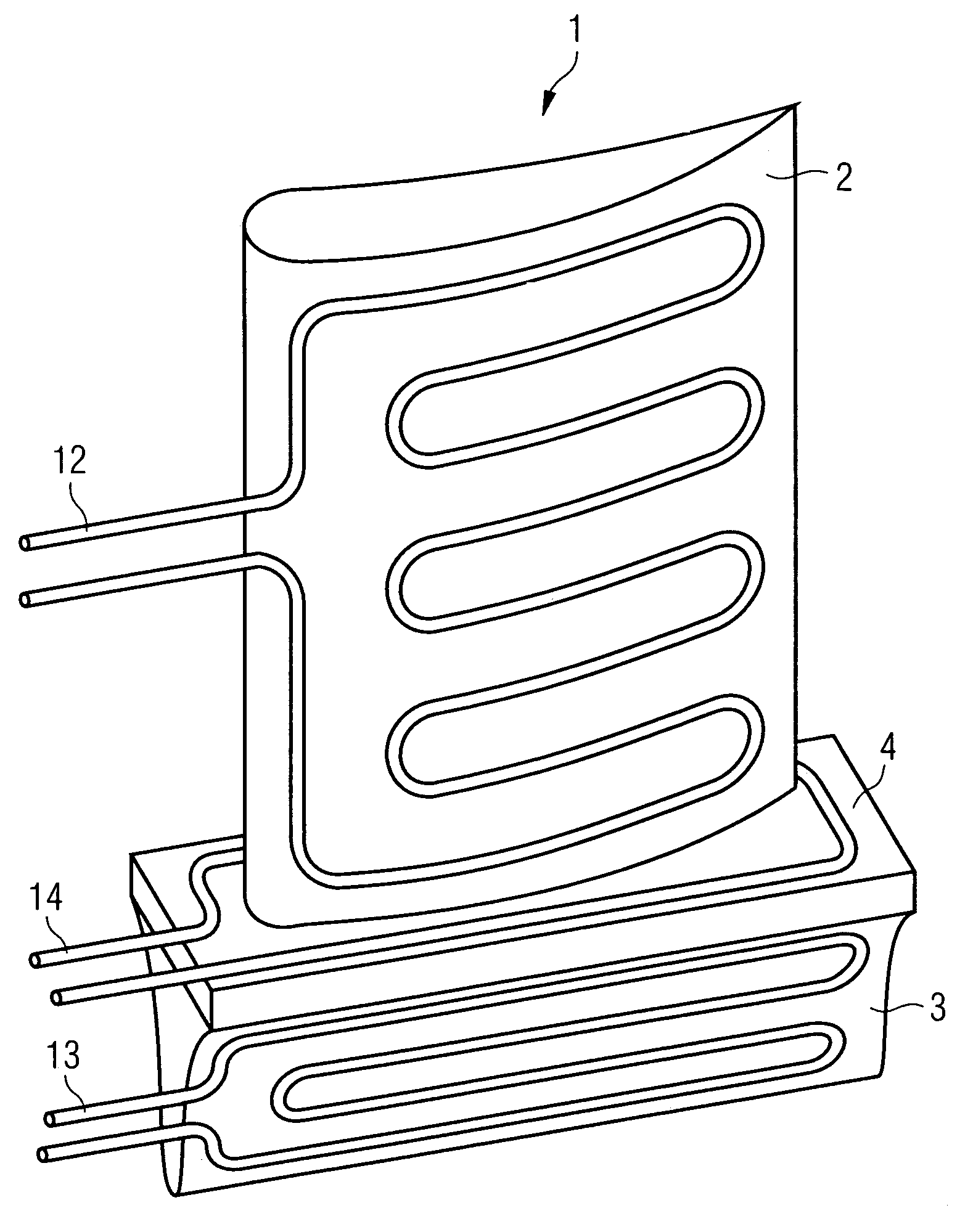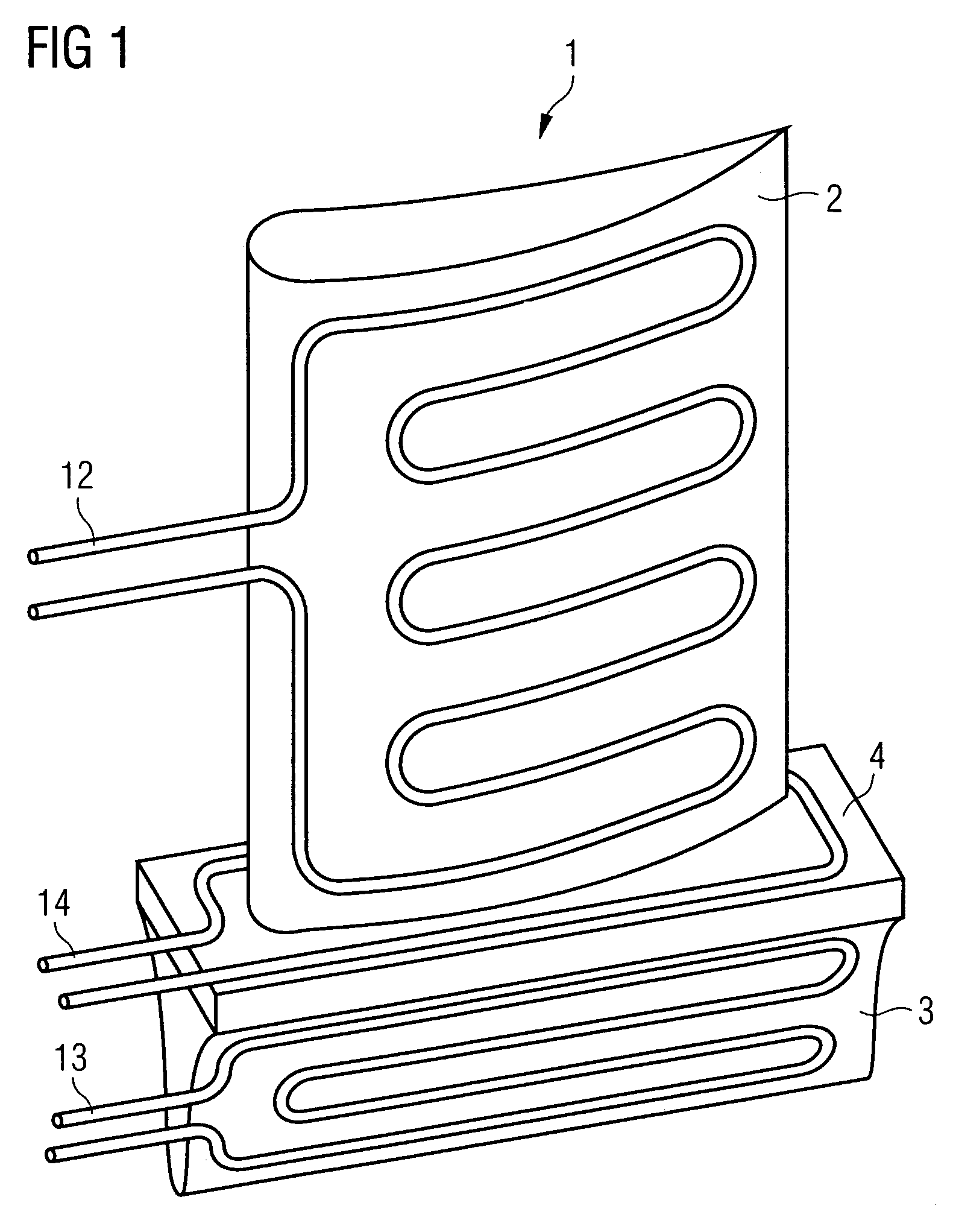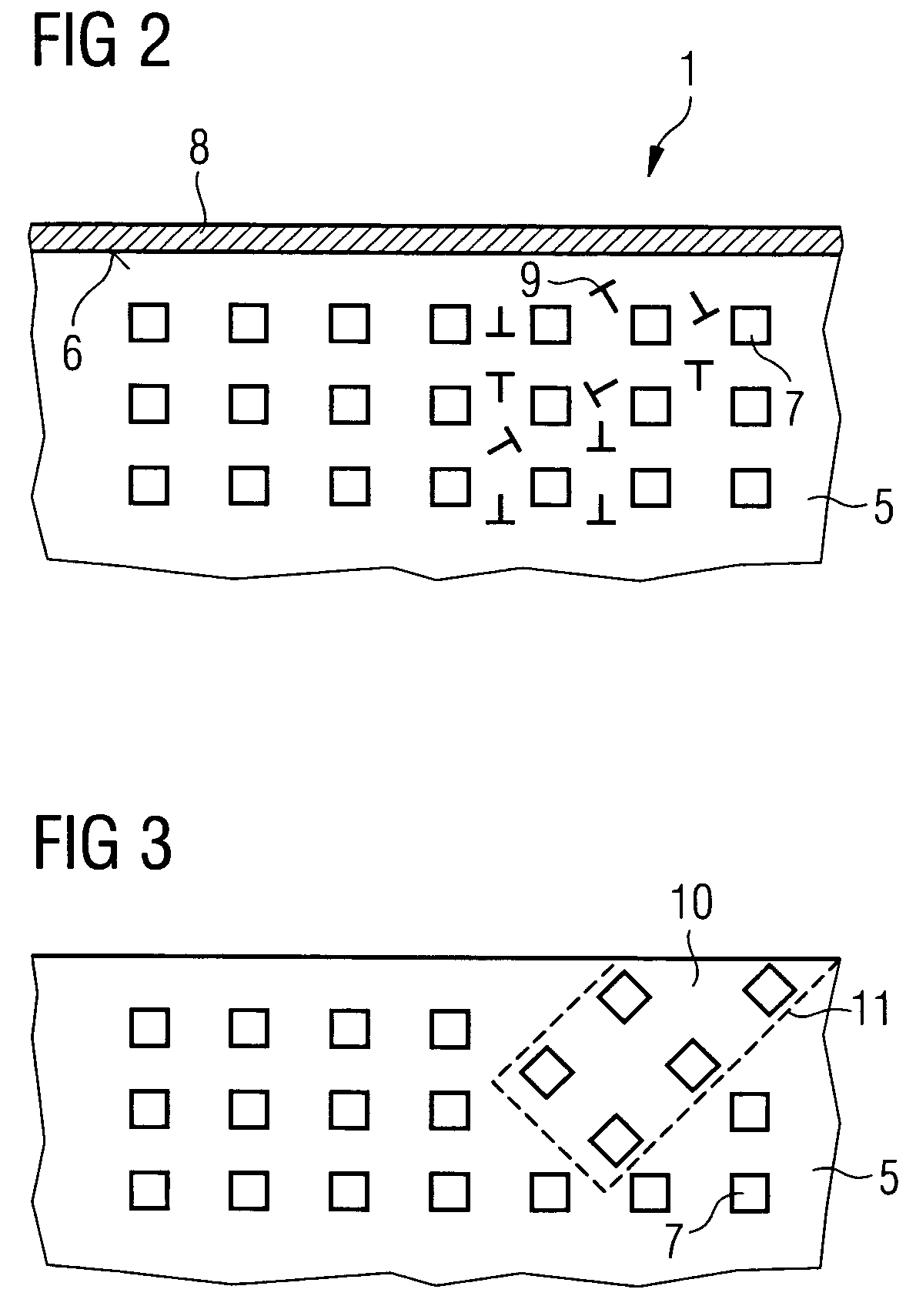Heat treatment method for monocrystalline or directionally solidified structural components
a monocrystalline or directionally solidified, heat treatment technology, applied in heat treatment apparatus, after-treatment details, furnaces, etc., can solve the problems of reducing affecting the life of the component, and affecting the microstructure of the material. , the effect of reducing the formation of recrystallized grains
- Summary
- Abstract
- Description
- Claims
- Application Information
AI Technical Summary
Benefits of technology
Problems solved by technology
Method used
Image
Examples
Embodiment Construction
In FIG. 1, the turbine blade 1 is represented while the heat treatment method according to the invention is being carried out. The turbine blade 1 comprises a blade airfoil 2, a blade root 3 and also a blade base 4, which connects the blade airfoil 2 to the blade root 3. The turbine blade is produced from a nickel-based monocrystalline superalloy which has a monocrystalline structure with two main crystalline phases, the so-called γ phase and the so-called γ phase. Both phases are well-known to a person skilled in the art and are not explained any further at this point.
The structure of the nickel-based monocrystalline superalloy is schematically represented in FIG. 2. The microstructure of the material with the γ phase 5 and the γ phase 7 can be seen. Likewise represented are points of the material at which there are lattice defects, known as imperfections 9. Such imperfections 9 are caused by stresses which occur in the superalloy during the mechanical working of the turbine blade ...
PUM
| Property | Measurement | Unit |
|---|---|---|
| dissolution temperature | aaaaa | aaaaa |
| temperature | aaaaa | aaaaa |
| resistance | aaaaa | aaaaa |
Abstract
Description
Claims
Application Information
 Login to View More
Login to View More - R&D
- Intellectual Property
- Life Sciences
- Materials
- Tech Scout
- Unparalleled Data Quality
- Higher Quality Content
- 60% Fewer Hallucinations
Browse by: Latest US Patents, China's latest patents, Technical Efficacy Thesaurus, Application Domain, Technology Topic, Popular Technical Reports.
© 2025 PatSnap. All rights reserved.Legal|Privacy policy|Modern Slavery Act Transparency Statement|Sitemap|About US| Contact US: help@patsnap.com



